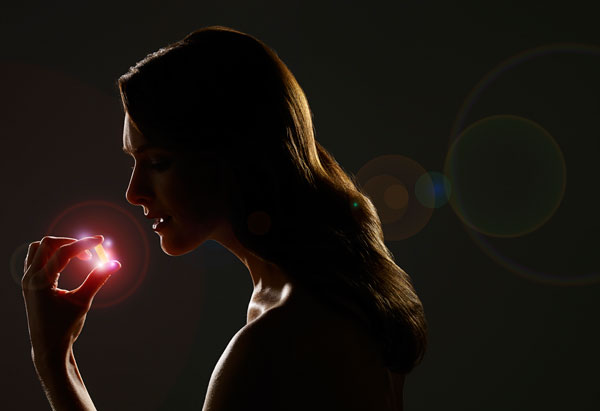Can a Single Pill Change Your Life?

Photo: Dan Saelinger
PAGE 2
To a layperson, the notion of using a drug like Ecstasy as a therapeutic tool for healing trauma might make as much sense as adding cocaine to a diabetic's weight loss regimen. Ecstasy was the signature stimulant fueling a worldwide party culture in the 1980s and '90s, epitomized by massive all-night dance "raves" crammed with blissed-out revelers and pulsating with electronic music at festivals and exurban warehouses across North America and Europe. By the turn of the century, Ecstasy—in tablets frequently laced with methamphetamine, tranquilizers, or PCP, and sometimes containing little actual MDMA—had spread from the cavernous clubs of Manchester and Toronto to mainstream hip-hop culture: Missy Elliott named an album after it, Eminem boasted about writing songs under its influence, and more recently, Jay-Z gave it a cameo in his anthem "Empire State of Mind" ("MDMA got you feelin' like a champion").
For ravers and rappers, E stood for euphoria, energy, empathy, escape. It was the "hug drug," the "love drug." For worried parents and government officials, however, Ecstasy equaled psychedelic mayhem, as reports and rumors swirled that it could cause nervous breakdowns, memory loss, Parkinson's disease, even death.
Yet MDMA's beginnings were innocent, even banal. In 1912 it was included as an intermediate chemical in a patent that the German pharmaceutical company Merck filed for an antibleeding medication. Then it all but vanished from sight until 1976, when the psychedelic researcher and former Dow chemist Alexander Shulgin—acting on a tip from a female student he has never named—synthesized MDMA in his lab and, as was his M.O., tested it on himself. "I feel absolutely clean inside, and there is nothing but pure euphoria," Shulgin wrote after his first MDMA trip. "The cleanliness, clarity, and marvelous feeling of solid inner strength continued throughout the rest of the day and evening." Therapists in Shulgin's circle began experimenting with the drug in couples and family counseling. One of them, Oakland-based psychologist Leo Zeff, dubbed the drug Adam for what he saw as its power to return patients to an Eden-like state of uncorrupted consciousness.
Untold thousands of practitioners have risked their licenses to use MDMA in underground clinical settings since 1985, when the drug was added to Schedule I (the Drug Enforcement Administration's category for substances with no accepted medical use and a high potential for abuse). To these therapists, MDMA offers the opposite of party-hard escapism—instead, they see the drug as a catalyst for digging deep into the human psyche. For the four or so hours that a dose lasts, it prompts a surge in serotonin and dopamine (neurochemicals associated with sensations of happiness and pleasure) and oxytocin (the chemical messenger of trust and bonding that, for example, mothers feel when nursing their babies). MDMA also tames the brain's fear center, the amygdala, and subdues the fight-or-flight response that pushes the nervous system into adrenaline-fueled overdrive in times of stress. Any apprehension a trauma patient might ordinarily suffer in therapy—about revisiting trigger memories or confronting painful emotions—is muted, but without the sedative effects of antianxiety medications. MDMA enhances the patient's powers of visualization, but without the involuntary hallucinations conjured by psychedelic drugs such as LSD or psilocybin. And MDMA has profound (and as yet mostly mysterious) full-body analgesic properties. An injured veteran or victim of abuse can suddenly enter a world free of pain. A rape survivor or a person with an eating disorder can grasp what it's like to be comfortable in her own skin.
Supporters of legalized MDMA therapy believe it can be applied in couples counseling and in treatment for depression, body-image disorders, chronic pain management, and end-of-life anxiety. But many advocates think its best chance at mainstream acceptance is as a tool for people with PTSD. Later this year, Michael Mithoefer, MD, a psychiatrist in Charleston, South Carolina, will publish the long-term follow-up results of the small pilot study that Sarah first heard about six years ago. The outcome: Seventeen of 20 subjects no longer met the diagnostic criteria for PTSD after just two or three sessions of MDMA-aided therapy led by Mithoefer and his wife, Ann, a psychiatric nurse.
"With MDMA, you not only see your fear but trust yourself to go past it," says Marcela Ot'alora, 52, a Colorado therapist who took MDMA under a psychologist's care in 1984 to treat PTSD stemming from an abusive relationship. "It shows you how to be kinder to yourself, and how much you're capable of. It allows you access to a place in your mind that's compassionate and full of love. You might have abandoned that place, but it never abandoned you."



